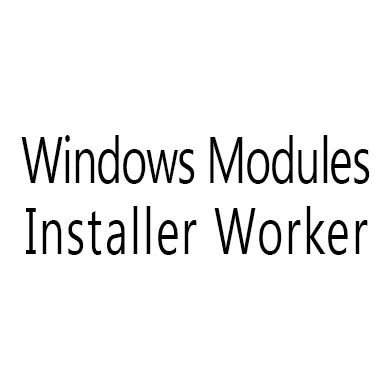
The Installer Worker module (also known as Tiworker.exe) is designed to set up small system updates in the background. Because of its specifics, it may be too much to load the OS, which ways the interaction with Windows can even become impossible (you have to reboot OS).
Delete this process cannot be removed, so you have to look for alternative solutions. This problem is found only on Windows 10.
general information
Typically, the Tiworker.exe process does not produce a strong load on the system, even if you search or install updates (the maximum load should be no more than 50%). However, there are cases when the process overloads a computer, making it difficult for him difficult. The reasons for this problem may be as follows:- During the operation of the process there was any failure (for example, you have urgently rebooting the system).
- Files that are needed to update the OS were incorrectly downloaded (most often due to interruptions in connecting to the Internet) and / or were damaged by being on the computer.
- Problems with Windows Update Service. Very often found on pirated versions of the OS.
- The system registry was damaged. Most often, this problem is found if the OS has not been cleared of various software "garbage", which accumulates during work.
- A virus was made on the computer (this reason is rare, but there is a place to be).
Here are a couple of the most obvious tips that will help remove the load on the processor emanating from Windows Modules Installer Worker:
- Wait a certain time (you may have to wait a few hours). Recommended for waiting time to disable all programs. If the process will not complete its work during this time and the situation with the load will not improve in any way, then you will have to move towards active actions.
- Perform a computer to restart. During restarting the "Boy" system, the files are deleted, and the registry is updated, which helps the Tiworker.exe process start downloading and installing updates. But the reboot is not always effective.
Method 1: Manual Search for Updates
The process is loan due to the fact that for some reason it cannot independently find updates. For such cases, Windows 10 provides their manual search. When updates are detected, you will have to independently install them and restart the system, after which the problem should disappear.
To search, follow next instructions:
- Go to "Settings". You can do this through the "Start" menu, finding the gear icon on the left side of the menu or use the Win + I key combination.
- Next, find the "Update and Security" in the panel.
- Going along the corresponding icon in the window that opens, on the left side, go to Windows Updates. Then click on the "Update Check" button.
- If the OS detects any updates, they will be displayed below this button. Set the freshest of them by clicking on the "Set" inscription, which is opposite the update name.
- After the update is installed, restart the computer.
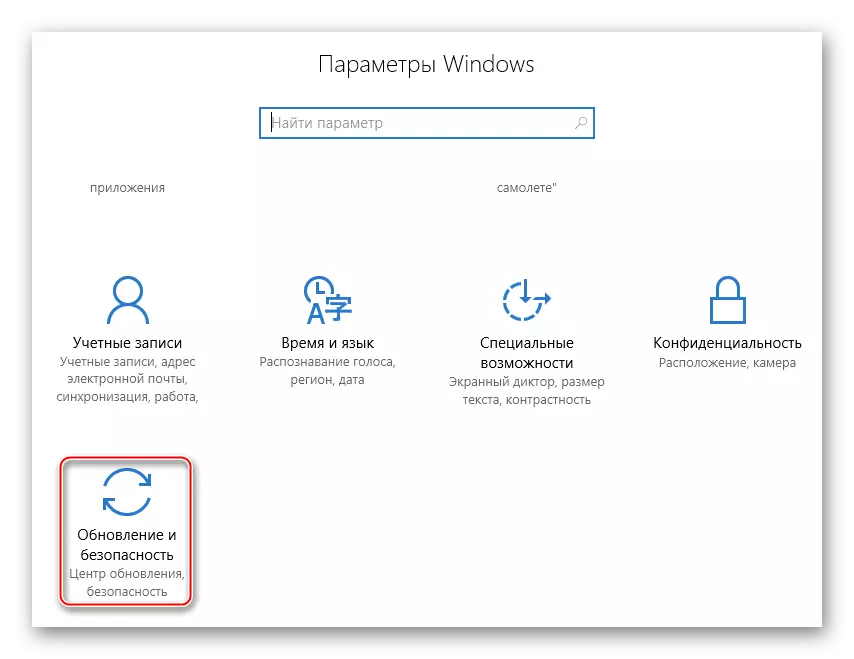
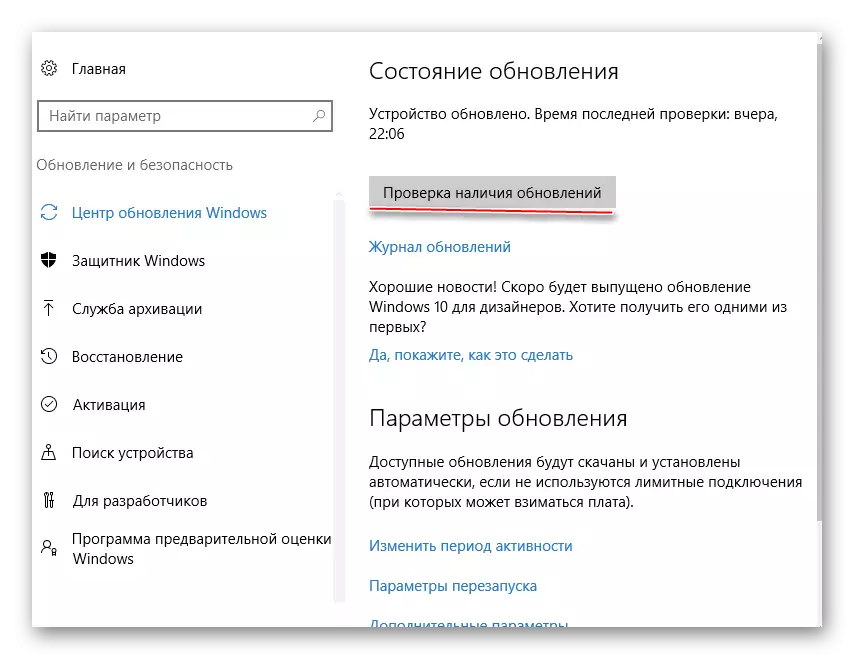
Method 2: Cleaning Cache
Outdated cache can also encourage the Windows Modules Installer Worker. Cleaning can be performed in two ways - using CCleaner and standard Windows tools.
We perform cleaning using CCleaner:
- Open the program and in the main window Go to "Cleaner".
- There, in the top menu, select "Windows" and click "Analyze".
- When the analysis is completed, then click on the "Run Cleaner" and wait 2-3 minutes while the system cache deals.
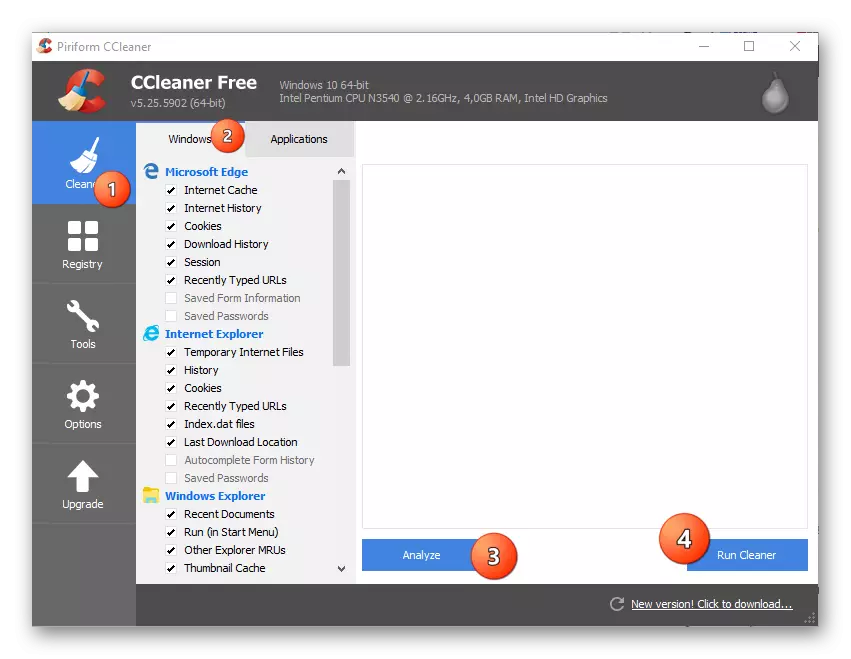
The main disadvantage of this type of cache cleaning is a small probability of success. The fact is that this software clears the cache from all applications and programs on the computer, but does not have full access to system files, so it can skip the system updates' cache or delete it is not completely.
We perform cleaning using standard methods:
- Go to "Services". To make a quick transition, call the "Command Line" by the Win + R keys combination and enter the Services.msc command there, without forgetting to click on the "OK" or ENTER key.
- In "Services", find the "Windows Update Center" (also it may be called "Wuauserv"). Stop it by clicking on it and clicking on the left side of the "Stop Service".
- Create "Services" and proceed to this address:
C: \ Windows \ SoftWaredistrationTribution \ DOWNLOAD
This folder contains outdated updates files. Clean her. The system can request confirmation of actions, confirm.
- Now open "services" and run the Windows Update Center, having done similar steps with a 2nd item (instead of "stopping service" will "run the service").
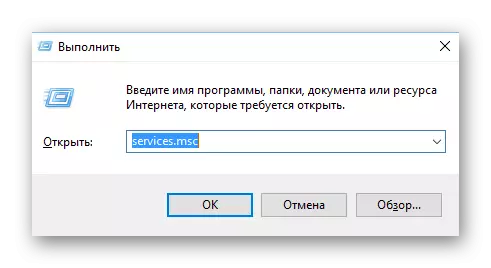
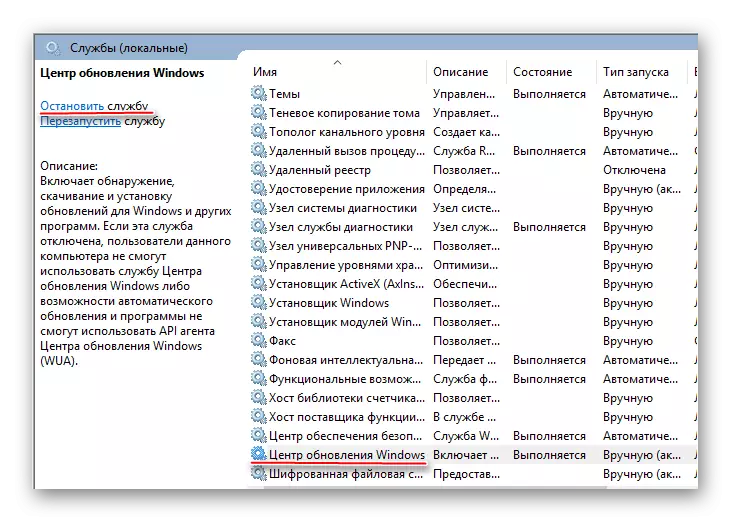
This method is more correct and effective, compared to CCleaner.
Method 3: Checking the system for viruses
Some viruses can be masked under system files and processes, and then load the system. Sometimes they are not disguised precisely under system processes and make small adjustments to their work, which leads to a similar effect. To eliminate viruses, use any antivirus package (free of charge).
Consider step-by-step instructions on the example of Kaspersky Anti-Virus:
- In the main program window, find the computer check icon and click on it.
- Now select the scan option, all of them are located in the left menu. It is recommended to conduct "full check". It can take a lot of time, while the performance of the computer will significantly fall. It is the likelihood that the malicious program will remain on the computer approaching zero.
- Upon completion of the check, Kaspersky will show all the found dangerous and suspicious programs. Remove them by clicking on the name of the program "Delete" program.
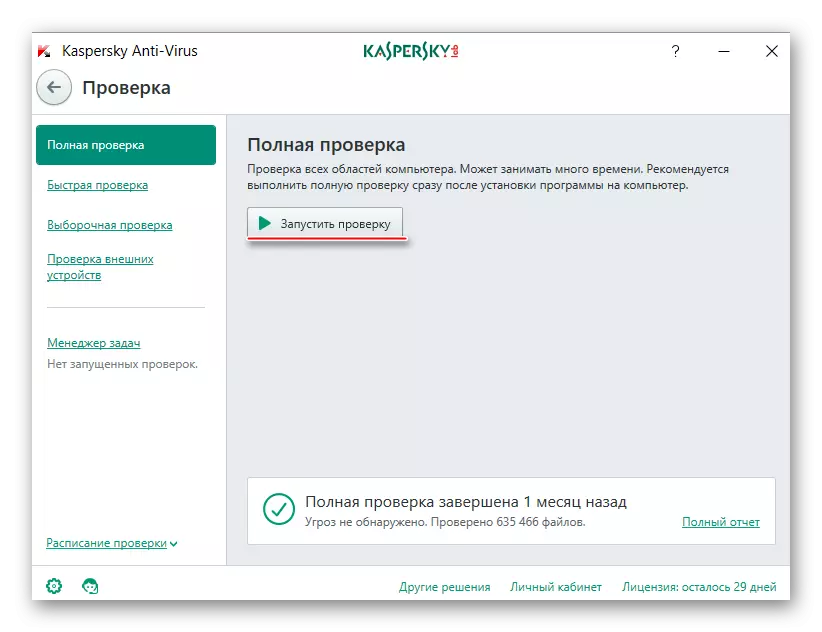
Method 4: Disable Windows Modules Installer Worker
If nothing helps and the load on the processor does not disappear, it remains only to disable this service.
Use this instruction:
- Go to "Services". To quickly, use the "Run" window (called the Win + R keys combination). In the row, do this command Services.msc and press ENTER.
- Find the Windows Installer Service. Click on it right-click and go to "Properties".
- In the "Startup Type" column, select from the drop-down menu "Disabled", and in the "Status" section, click on the "Stop" button. Apply settings.
- Do items 2 and 3 with the Windows Update Center.
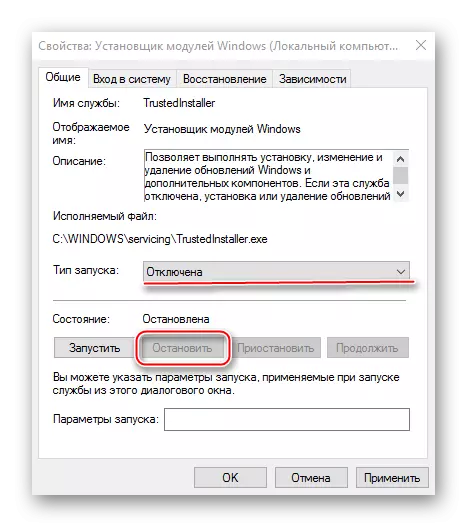
Before applying all the advice in practice, it is recommended to try to find out what caused overload. If you think that your PC does not need regular updates, you can generally disable this module, although this measure is not recommended.
